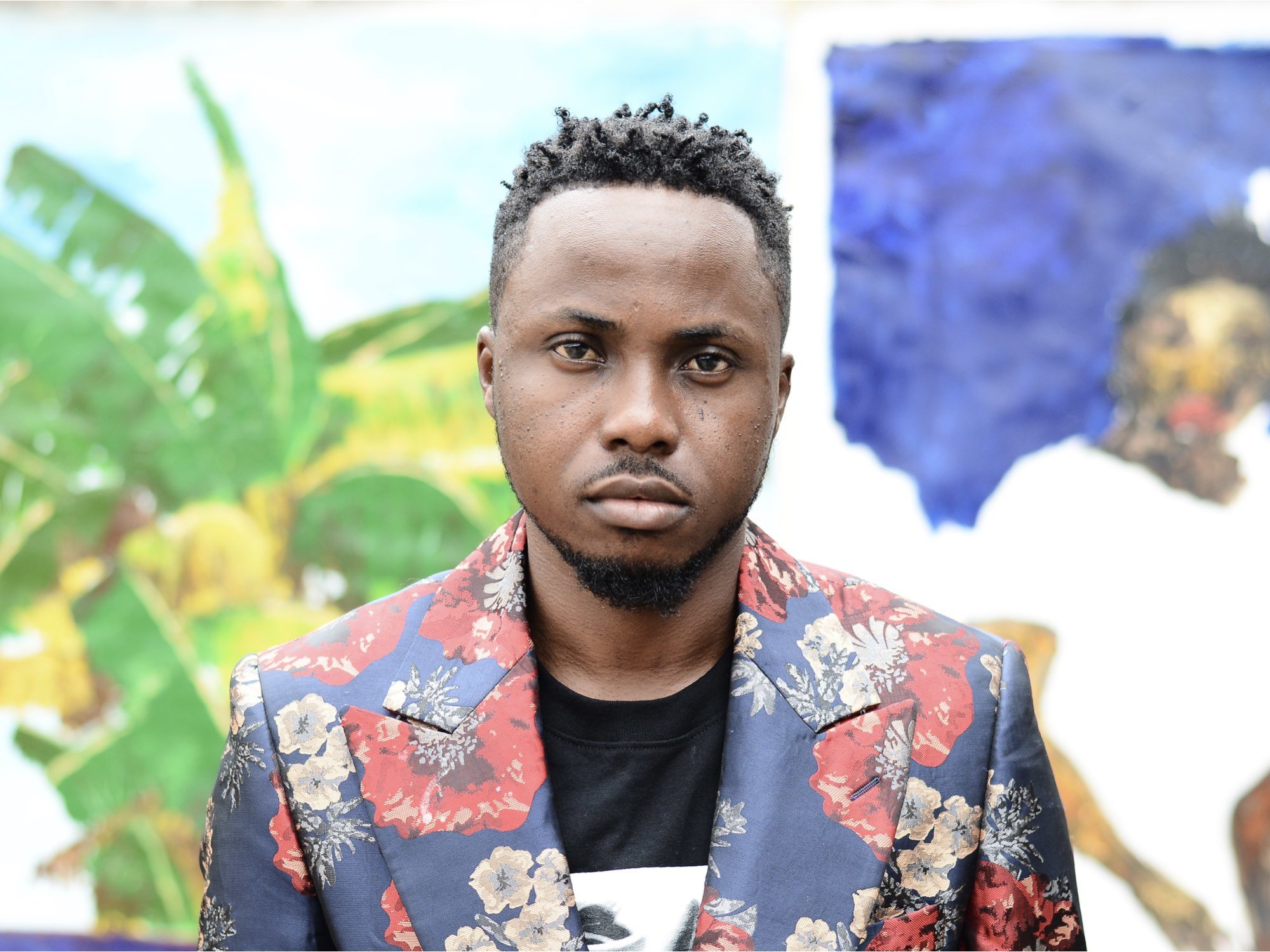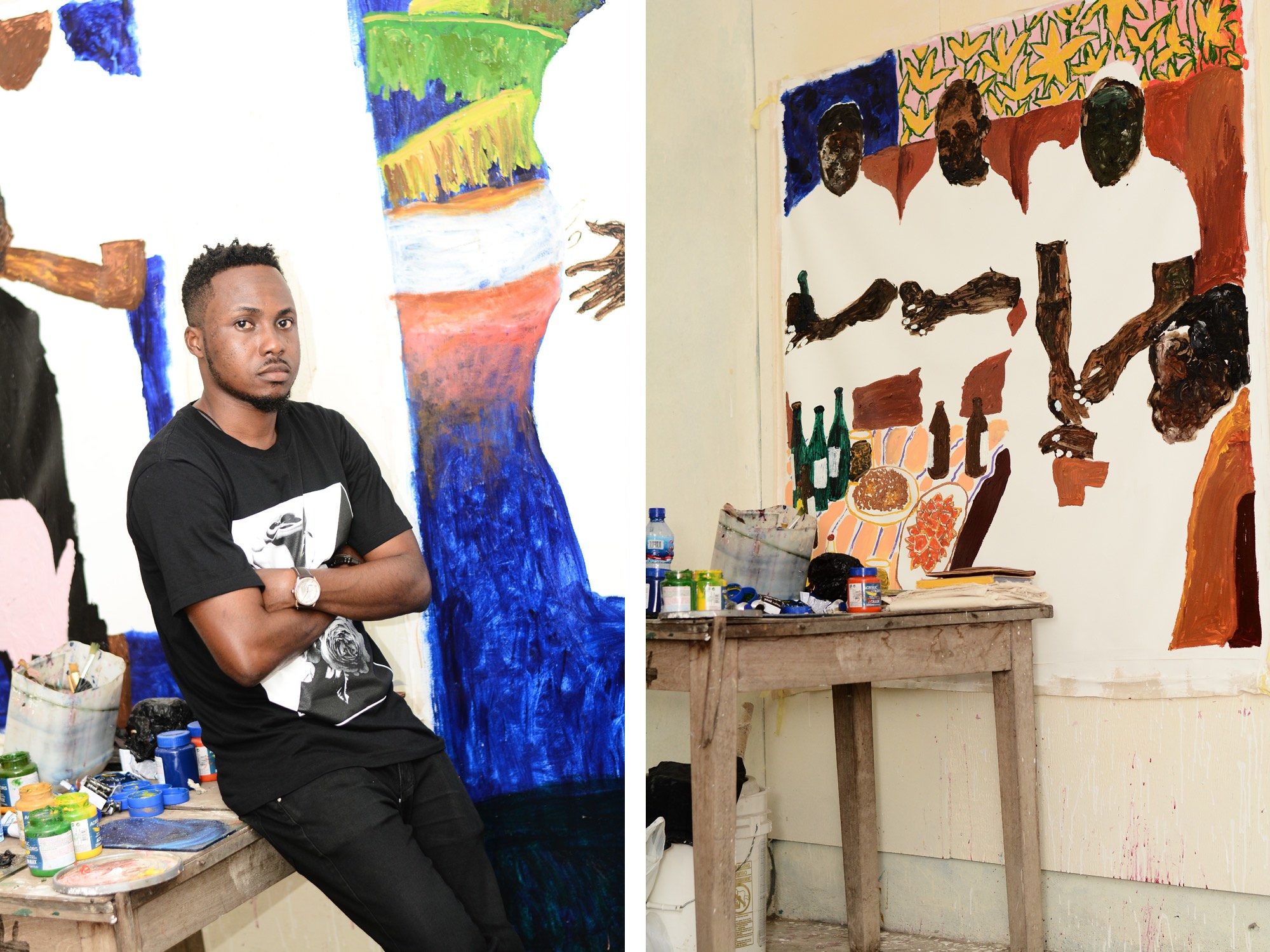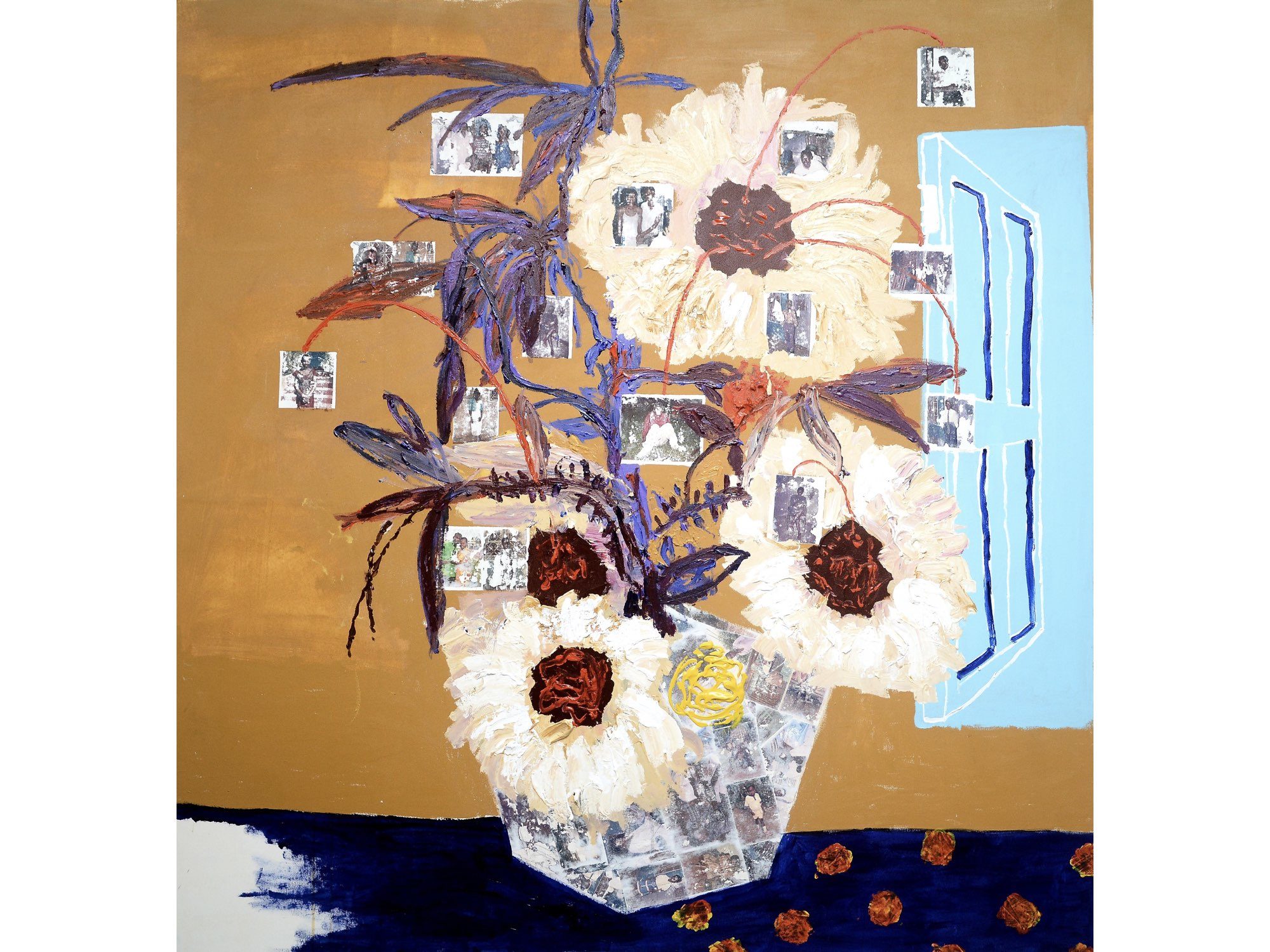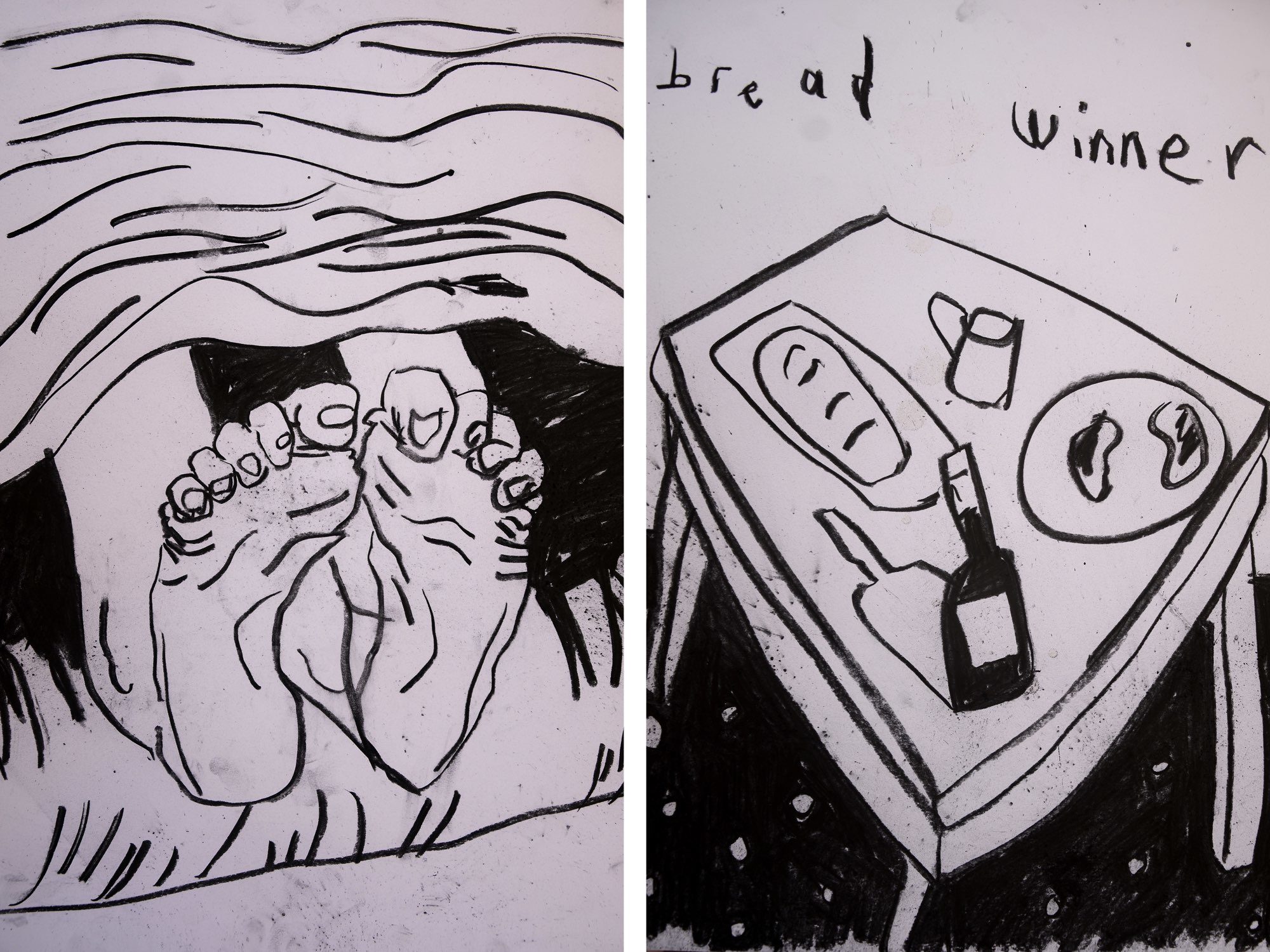We’re a few minutes into a WhatsApp call, and Gideon Appah is struggling to remember a dream. It’s not his own, but he pieces it together in vivid fragments. It’s a nightmare his mother had as a teenager. It involved going to a dark shoreline. A friend of hers—or maybe it was her?—jumped into the water, bobbing in the mist, subject to unknown danger. “It was really scary,” says Appah, “and I tried to paint it that way.”
Appah made the story the subject of “Her Dream of the Drain” (2018), a person-height canvas that shows a ghostly white figure suspended in a sea of striking aquamarine. Another figure, rendered more realistically, lies partially submerged at the bottom of the painting. Above, a photograph of a boy’s head—Appah’s brother—floats by on a rogue current of built-up white acrylic.
There’s a narrative here, but not a legible story. The figures, the photograph, the tactility of the materials, and the arresting color add up to a haunting, if inscrutable, atmosphere. The work is a showstopper in the 29-year-old artist’s breakout series of dreamy recollections of his childhood in Accra, Ghana. “They are my ways of listening to stories and then trying to paint them out,” he says.
Appah studied at Kwame Nkrumah University of Science and Technology in Kumasi, where he earned a BFA. His early paintings draw on the visual noise of the Accra streets, pulling symbols, scrawls, and lotto numbers into paintings that hum with color. His early works owe no small debt to Jean-Michel Basquiat, but Appah’s approach was distinct enough to win first place in South Africa’s L’Atelier Art Competition in 2015. “We were struck by his boldness and use of materials, scratching and building up the paint to add layers,” says curator and critic Johan Myburg, who chaired the jury that year.
The artist’s new work keeps the rough materials and bold colors, but it’s softer, more contemplative, and more absorbing. At this year’s New York edition of the 1:54 Contemporary African Art Fair, Appah re-created his grandmother’s living room inside the booth of Accra-based Gallery 1957. Carpeting, an old television, chairs, and dusty bottles of Ghanaian herbal liqueurs set the scene for “Memoirs Through Pokua’s Window,” a collection of charcoal drawings and paintings incorporating family photographs. “Recall and memories are themes in all of my work,” Appah says. “I like to refer to an emotion contained in a static moment.” For a new group of paintings, Appah is working with stills from old Ghanaian films he watched on television with his family as a child.
As Appah has gained notoriety, he has become part of a generation of artists, curators, dealers, and collectors raising the profile of Accra’s art scene. “The strength and depth of the young artists here has huge potential,” says Marwan Zakhem, a construction magnate and the art dealer behind Gallery 1957, which is named for the year of Ghana’s independence. Appah will have his first solo show at the gallery next spring, contributing to the city’s future as an art destination while his paintings evoke its past.





